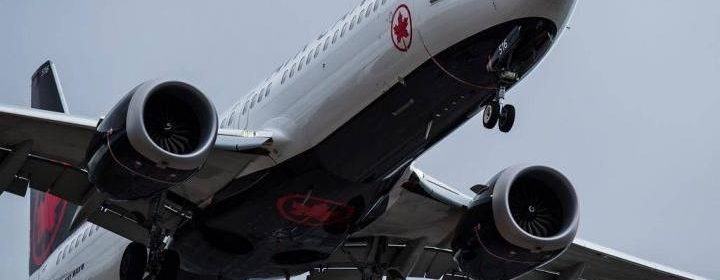Coronavirus: More infected passengers reported on flights involving B.C. airports

The BC Centre for Disease Control has added three more international flights and five domestic flights in the past week to its list of COVID-19 in-flight exposures involving passengers who later tested positive for the novel coronavirus.
The new international flights with a COVID-19 case on board include:
- March 11 – Air Canada 37 Vancouver to Melbourne, rows n/a
- March 17 – Delta (unknown flight number) Seattle to Vancouver, rows n/a
- March 21 – Air Canada 855 London to Vancouver, rows n/a
The new domestic flights with a COVID-19 case on board include:
- March 10 – Air Canada 102 Vancouver to Toronto, rows n/a
- March 10 – Air Canada 416 Toronto to Montreal, rows n/a
- March 15 – WestJet 3103 Calgary to Nanaimo, rows n/a
- March 21 – Air Canada 8420 Vancouver to Kelowna, rows n/a
- March 24 – Air Canada 8245 Terrace to Vancouver, rows n/a
The BCCDC says as of March 27, B.C. no longer directly contacts passengers from domestic flights who were seated near a confirmed case during the flight.
Passengers in the affected seats may have been exposed to COVID-19 and should self-isolate and monitor for symptoms for 14 days following the flight.
For flights with affected seats not specified, the BCCDC recommends that flight passengers self-isolate and monitor for symptoms for 14 days following the flight.
[ Sign up for our Health IQ newsletter for the latest coronavirus updates ]
There are now 17 international flights taking off or landing at Vancouver International Airport (YVR) in which a passenger tested positive for the novel coronavirus after arrival.
There are also 18 domestic flights involving Vancouver, Victoria, Kelowna, Kamloops, Nanaimo, Terrace and Prince George airports where a passenger later tested positive for the disease.
As of March 25, it is mandatory under the Quarantine Act that anyone arriving in B.C. from outside of Canada is required to stay home for 14 days upon their arrival.
Returning travellers that develop respiratory symptoms are also required to self-isolate for a period of 10 days after the onset of symptoms.
For a full list of affected international and domestic flights, click here.
For advice on self-isolation and self-monitoring, click here.
If you believe you have COVID-19 symptoms, you’re asked to do a self-assessment.
Source: Read Full Article

